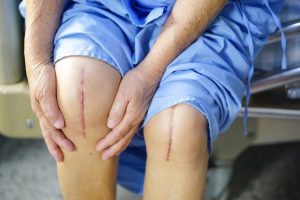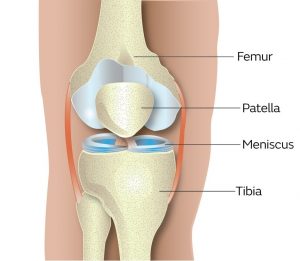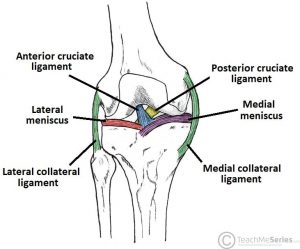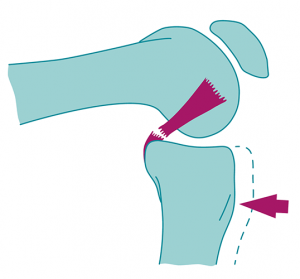Are you struggling with the rehabilitation process after knee replacement surgery?
Do you want to know how to customize your rehabilitation plan for optimal results?
Discover how personalized knee replacement rehabilitation in London can help you regain mobility and improve your quality of life.
What will you do if your cell phone is not working properly and is damaged to an extent that it cannot be repaired?
Replace it with a new one. This is the most frequent answer you’ll get for this particular question.
But what if we replace the word “cell phone” in that question with “Knee”?
The answer is the same.
Don’t be surprised. Your knees can be replaced as well (Just like your cell phone). But it’s not that much cheap (Obviously).
Knee replacement procedures are very common surgeries these days and according to National Health Service (NHS), more than 70,000 knee replacement surgeries are being performed each year in the UK.
Whether you are a candidate for Knee Replacement surgery or not depends on your knee condition.
The most common indication for undergoing knee replacement surgery is Knee Osteoarthritis (1).
Other indications for undergoing Knee Replacement surgery are as follows. (2, 3)
- Severe joint pain.
- Severely restricted joint motion
- Marked joint deformity
- Failure of non-operative management or previous operative procedure of knee.

When opting for Knee Replacement surgery in London, you need to consider a rehabilitation programme pre-operatively as well as post-operatively.
If you live in greater London it is recommended to undergo a pre-operative rehabilitation programme in London before knee replacement surgery for obtaining better outcomes of the surgery (4).
London patients who have good functional status pre-operatively have better outcome measures as compared to patients who have decreased functional status pre-operatively. (5)
When we talk about post-operative status, Knee Replacement surgery results in marked improvements in physical performance, especially during the first 12 weeks. (6)
A few benefits are as follows:
- Pain Relief
- Improved range of motion of Knee Joint
- Reduction of swelling
- Ease in performance of Activities of Daily Living (ADL’s)
- Improved balance
- Improved Lifestyle
This is why a focused Knee Replacement Rehabilitation programme with a London knee rehabilitation specialist is paramount for achieving better physical and mental outcomes.

And what is the most important thing in a good rehabilitation programme?
A Long Term Proven and Tested – Knee Rehabilitation Trainer.
And where to find a perfect rehabilitation trainer for Knee Replacement Rehabilitation in London?
If you are looking to get rid of knee pain, improve your functional abilities after knee replacement surgery or if you are planning to undergo a Knee Replacement surgery and want to know more about Knee Replacement Rehabilitation, you can book your FREE CONSULTATION now with Elite Personal Trainer, Jazz Alessi.
Meniscus Injury Rehabilitation Programme
How many times in your life you’ve heard about discs?
They’re everywhere. Aren’t they?
But the interesting fact is that are present even in your body.
Yes, discs are present in your back (known as Intervertebral Discs) and also in your knees (known as Meniscus)
Meniscus is a disc made up of cartilage and is present in your knee, between your two bones i.e. Femur and Tibia.
There are two menisci present in your knee; one at the inner side of the knee (medial) and one at the outer side of the knee (lateral). (7)
You may wonder that why do I need two disc-shaped structures in my knee?
The answer is simple.
Whenever two hard surfaces make contact with each other and move, they face a considerable amount of friction.
Same is the case for bones.
Menisci are placed in between the knee joint to provide a cushion to the moving bones.
They also reduce a significant amount of friction and make the movement of bones easier. (7)

Picture source: www.rediscoveryourgo.com
This is good. Isn’t it?
But the bad part is, they can get injured/torn (like every other part of our body) if they are excessively or inappropriately stressed.
The meniscus present at the inner side of your knee (medial meniscus) is more prone to get injured/torn as compared to meniscus on the outer side of your knee (lateral meniscus). (6)
This can happen when you, due to any reason, rotate your leg internally while your foot is fixed on the ground.
But there is a good part too.
What’s that?
Menisci can heal (to some extent) and there are varieties of surgical options available for treatment of torn/injured meniscus.
- A good rehabilitation programme focusing on meniscus can help speed up the healing process and also improve the outcomes of surgical interventions.
And what is the most important thing in a good rehabilitation programme?
A Knowledgeable and Long Term Tested – Knee Rehabilitation Trainer.
- Thinking of consulting an experienced Knee Rehabilitation Trainer for your meniscus injury?
- Want to get rid of knee pain and walk without pain or limitations?
Why not book a FREE CONSULTATION with the best personal trainer in London, Jazz Alessi?
Knee Ligaments Injuries Rehabilitation
Everything in this universe has a limit i.e. A limit to move, a limit to deform, a limit to expand, etc.
Your body has certain limits too.
One of those limits is the limit to movement.
You can move your body parts to a certain limit and after that, you feel a significant amount of restriction.
This restriction is provided by a number of structures in our body i.e. Capsules, Bones, Soft tissues, and most importantly Ligaments.
Ligaments are the structures that connect bone to bone and prevent excessive movement of bones.
Every ligament in our body has a certain role to play.
Just like all other parts of your body, Knee Joint also has a number of ligaments.
Out of these ligaments, the most important ones are as follows.
- Anterior Cruciate Ligament (ACL)
- Posterior Cruciate Ligament (PCL)
- Medial Collateral Ligament (MCL)
- Lateral Collateral Ligament (LCL) (7)

Picture source: www.teachmeanatomy.info
What will happen when a structure limiting a bone movement gets torn/injured?
You know the answer.
It would be difficult to restrict that movement efficiently and bones will show excessive movement.
This is what happens when a ligament or ligaments around the knee get torn or injured.
The direction of hypermobility depends on the type of ligament injured.
1. ACL Injury Rehabilitation
Anterior Cruciate Ligament (ACL) is an important ligament in your knee that restricts excessive forward translation of tibia (leg bone) over femur (thigh bone). (8)
ACL is the ligament that is most commonly injured.
The injury can result due to the following reasons.
- Direct blow to the outer side of your knee.
- Forceful outward rotation of your leg when your foot is fixed on the ground.
- Forceful hyper-extension of your knee. (3)
This injury can result in excessive forward translation of your tibia (leg bone) over femur (thigh bone).
If you carry out ambulation with an injured ACL for a prolonged time, some other structures in your knee (Lateral Collateral Ligament (LCL), Joint Capsule) are excessively stressed and they become loose.
This can alter your gait pattern and you’ll start walking in a way in which there is a minimum bending movement of your knee, a gait pattern known as “Quadriceps Avoidance Gait”. (9)

But again, there’s a good part too.
We have a variety of options available for dealing with an ACL injury i.e. Non-surgical options as well as surgical options.
There is a debate about which option has better outcomes i.e.
Surgical or non-surgical (conservative). (10)
But whatever approach you choose, a rehabilitation programme is a must.
If you choose a conservative approach to your ACL injury, the entire focus is on the knee rehabilitation programme.
And if you choose a surgical approach for managing your ligament injury, a customised exercise programme again plays a vital role both pre-operatively and post-operatively.
And when we talk about a good rehabilitation programme, what is the most important thing to consider?
Yes, you guessed it right.
A Proven and Tested – Knee Rehabilitation London Trainer.
Is there any elite personal trainer for ACL Injury Rehabilitation in London?
YES.
But before answering this question, this is what my client Ramona said about her ACL and meniscus rehab experience whilst working with me.
“With Jazz’s careful guidance I was able to achieve in 2 months what I didn’t manage in 8 months. Jazz is not sessions based, but results oriented and I never feel rushed or unsafe during the sessions.”
– Ramona –
Confused about your Knee Ligaments’ status? Have any questions related to your Knee Stability?
Why not ask your questions face to face (or online) from a knee specialist and experienced elite personal trainer in London?
Book your FREE ONLINE CONSULTATION now.
2. PCL Injury Rehabilitation
Posterior Cruciate Ligament (PCL) is another important ligament in your knee that restricts excessive backward translation of tibia (leg bone) over femur (thigh bone).
This is exactly opposite to the function of Anterior Cruciate Ligament (ACL).
Injury to PCL can result due to the following reasons.
- Direct blow to your shin bone while your knee is in bent position (MVA).
- Falling onto the ground while your knee is in a bent position.
- Forceful Hyper-flexion of your knee joint. (11)
Injury to this ligament is not much common as compared to injuries to ACL.
Injury to the PCL ligament results in excessive posterior displacement of tibia over femur, a sign known as Posterior Sag Sign. (12)

Picture source: www.aspetar.com
The purpose of this ligament along with ACL is to provide stability to your knee joint and if any of these ligaments are injured, stability of your knee joint is compromised.
You may feel your knee moving out of place or you may not be able to place a sufficient amount of weight on your knee.
Your knee can also show swelling and you may feel a considerable amount of pain while moving your knee joint or putting weight on your knee joint.
Options available for PCL injuries are similar to the options available for ACL injuries.
You can either opt for a non-surgical conservative approach or a surgical approach (PCL reconstruction) for managing a PCL injury.
But again, a focused rehabilitation programme is a part that you need to consider whenever you face a ligament injury.
When your ligaments are injured, extra stress is placed on your muscles and an individualised rehabilitation programme can help build your muscles strength and speed up the recovery process. (3)
And while choosing a rehabilitation programme, you need to focus on the most important thing.
A Battle Field tested – Knee Rehabilitation Trainer.
- Do you have any knee pain?
- Or do you know anyone who wants to get rid of knee pain and needs a personal trainer for PCL Injury Rehabilitation in London?
Book a FREE ONLINE CONSULTATION and let the elite rehab trainer to get you up and running again.
3. MCL Injury Rehabilitation
Medial Collateral Ligament (MCL) is another ligament present on the inner side of your knee joint.
The main function of this ligament is to prevent excessive outward motion of your knee joint. (3)
This ligament can be injured when excessive outward (valgus) forces are placed on your knee across the inner side (medial) of your knee.
Injuries to MCL are common but the majority of injuries of MCL are partial or incomplete and this is the reason why a majority of MCL injuries are managed conservatively (non-operatively). (3)

This ligament has a broad and flat structure having fan-shaped attachments and because of its structural configuration, it is typically managed using a conservative (non-surgical approach). (13)
So again, you need a rehabilitation programme for effectively returning to your activities.
This rehabilitation programme may last up to 8 to 12 weeks. (3)
A good rehabilitation programme for your MCL injury focuses on following factors.
- Pain Relief
- Swelling control
- Joint Protection
- Joint Mobility
- Muscles Strength
- Muscles Endurance (Stamina)
- Co-ordination
- Balance
- Safe return to play.
So if you’re suffering from an MCL injury, all you need is an Individualized MCL Rehabilitation Programme.
And you better know what to look for in a good rehabilitation programme.
What’s that?
Yes, you’re right.
A good Injury Rehabilitation Trainer.
What about if you find out the best exercises for MCL Injury Rehabilitation from a long-term knee specialist trainer who has experience in dealing with such injuries on a daily basis?
Book your FREE ONLINE CONSULTATION with Jazz Alessi, the best Knee Rehabilitation Trainer in London.
Online Personal Trainer
We all are well aware of the current situation of the world.
We are facing a pandemic and according to the World Health Organization (WHO), there are 10,117,687 confirmed cases of COVID-19 globally, including 502,278 deaths (Data gathered before 30th June).
In the United Kingdom, the number of confirmed cases is 311,155 with 43,550 deaths.
Just like every other city of the world, London is also affected by this pandemic having 27,000+ confirmed cases as reported by Public Health England (PHE).
We have not yet discovered a cure to this disease and all we can do at this moment is to prevent ourselves from being infected.
This is why people are being instructed to stay at home most of the time and leave home only in case of something urgent or emergency.
A number of rehabilitation centers around the globe are temporarily closed and are waiting for this pandemic to over.
So what if you’ve currently undergone a Total Knee Replacement surgery or any other Knee surgery in London or somewhere else and need a rehabilitation programme?
What if you’ve injured your knee somehow in this situation and need an expert advice?
Feeling worried?
You don’t need to be worried.
We’ve got you covered.
Now you can book an online session with the best personal trainer in London.

What can you consult?
Here is the list.
- Total Knee Replacement Rehab
- Meniscus Injury Rehab
- ACL Injury Rehab
- PCL Injury Rehab
- MCL Injury Rehab
- Knee Injury Assessment
- Pre and Post Knee Injury Rehabilitation
Have any queries?
Book now your FREE CONSULTATION .
Who is Jazz Alessi?
Before we talk about Jazz Alessi, I want you to answer a simple question.
What is the most important thing to consider when you are planning to undergo a rehabilitation programme?
Yes, you guessed it right again.
A LONG TERM, PROVEN AND TESTED – KNEE REHABILITATION TRAINER.
Jazz Alessi is the Outstanding Knee Rehabilitation Trainer you need.
Jazz Alessi is not only an Elite Personal Master Trainer but also a long-term Sports Nutritionist and 2nd generation Pilates injury rehabilitation teacher.
Having experience of teaching nutrition at London School of Economics (LSE) and training Olympic athletes, fighters, marathon runners, Jazz Alessi is one of the best personal trainer in London you can rely on.
Jazz himself is an ex martial-arts champion and he knows well how to help you achieve your goals while working on your fitness.
He is here to provide you with the best Individualised Knee Rehabilitation Programme that focuses on bringing out the best in you.
Have any questions?
Remember the surprise we talked about?
What about a FREE CONSULTATION?
Yes, you read it right.
A Free Consultation.
So what are you waiting for?
Book Now Your Online Free Consultation with the best knee rehab personal trainer in London.
Let’s connect.
REFERENCES
- Carr AJ, Robertsson O, Graves S, Price AJ, Arden NK, Judge A, et al. Knee replacement. The Lancet. 2012;379(9823):1331-40.
https://pubmed.ncbi.nlm.nih.gov/22398175/
- BORSTAD J. Postoperative Management. Therapeutic Exercise: Foundations and Techniques. 2017:359.
- Kisner C, Colby LA, Borstad J. Therapeutic exercise: foundations and techniques: Fa Davis; 2017.
https://books.google.com.pk/books?hl=en&lr=&id=yZc6DwAAQBAJ&oi=fnd&pg=PR1&dq=kisner+therapeutic+exercise&ots=Ney1I3gFUe&sig=lrg864PLGK07NLHfK8_WjWX33Mc&redir_esc=y#v=onepage&q=kisner%20therapeutic%20exercise&f=false
- Coudeyre E, Jardin C, Givron P, Ribinik P, Revel M, Rannou F, editors. Could preoperative
rehabilitation modify postoperative outcomes after total hip and knee arthroplasty? Elaboration of French clinical practice guidelines. Annales de réadaptation et de médecine physique; 2007: Elsevier.
https://www.sciencedirect.com/science/article/abs/pii/S0168605407000177
- Fortin PR, Clarke AE, Joseph L, Liang MH, Tanzer M, Ferland D, et al. Outcomes of total hip and knee replacement: preoperative functional status predicts outcomes at six months after surgery. Arthritis & Rheumatism: Official Journal of the American College of Rheumatology. 1999;42(8):1722-8.
https://onlinelibrary.wiley.com/doi/abs/10.1002/1529-0131(199908)42:8%3C1722::AID-ANR22%3E3.0.CO;2-R
- Kennedy DM, Stratford PW, Riddle DL, Hanna SE, Gollish JD. Assessing recovery and establishing prognosis following total knee arthroplasty. Physical therapy. 2008;88(1):22-32.
https://academic.oup.com/ptj/article/88/1/22/2747224
- Snell RS. Clinical anatomy by regions: Lippincott Williams & Wilkins; 2011.
https://books.google.com.pk/books/about/Clinical_Anatomy_by_Regions.html?id=vb4AcUL4CE0C&redir_esc=y
- Moore KL, Dalley AF, Agur AM. Clinically oriented anatomy: Lippincott Williams & Wilkins; 2013.
https://www.academia.edu/38931021/Clinically_Oriented_ANATOMY_Seventh_Edition
- Berchuck M, Andriacchi T, Bach B, Reider B. Gait adaptations by patients who have a deficient anterior cruciate ligament. J Bone Joint Surg. 1990:871-7.
https://pubmed.ncbi.nlm.nih.gov/2365720/
- Delincé P, Ghafil D. Anterior cruciate ligament tears: conservative or surgical treatment? Knee surgery, sports traumatology, arthroscopy. 2013;21(7):1706.
https://pubmed.ncbi.nlm.nih.gov/21773828/
- Schulz M, Russe K, Weiler A, Eichhorn H, Strobel M. Epidemiology of posterior cruciate ligament injuries. Archives of orthopaedic and trauma surgery. 2003;123(4):186-91.
https://pubmed.ncbi.nlm.nih.gov/12734718/
- Kannus P, Bergfeld J, Järvinen M, Johnson RJ, Pope M, Renström P, et al. Injuries to the posterior cruciate ligament of the knee. Sports Medicine. 1991;12(2):110-31.
https://pubmed.ncbi.nlm.nih.gov/1947532/
- Wilk KE, Andrews JR, Clancy WG. Nonoperative and postoperative rehabilitation of the collateral ligaments of the knee. Operative Techniques in Sports Medicine. 1996;4(3):192-201.
https://www.sciencedirect.com/science/article/abs/pii/S1060187296800475



